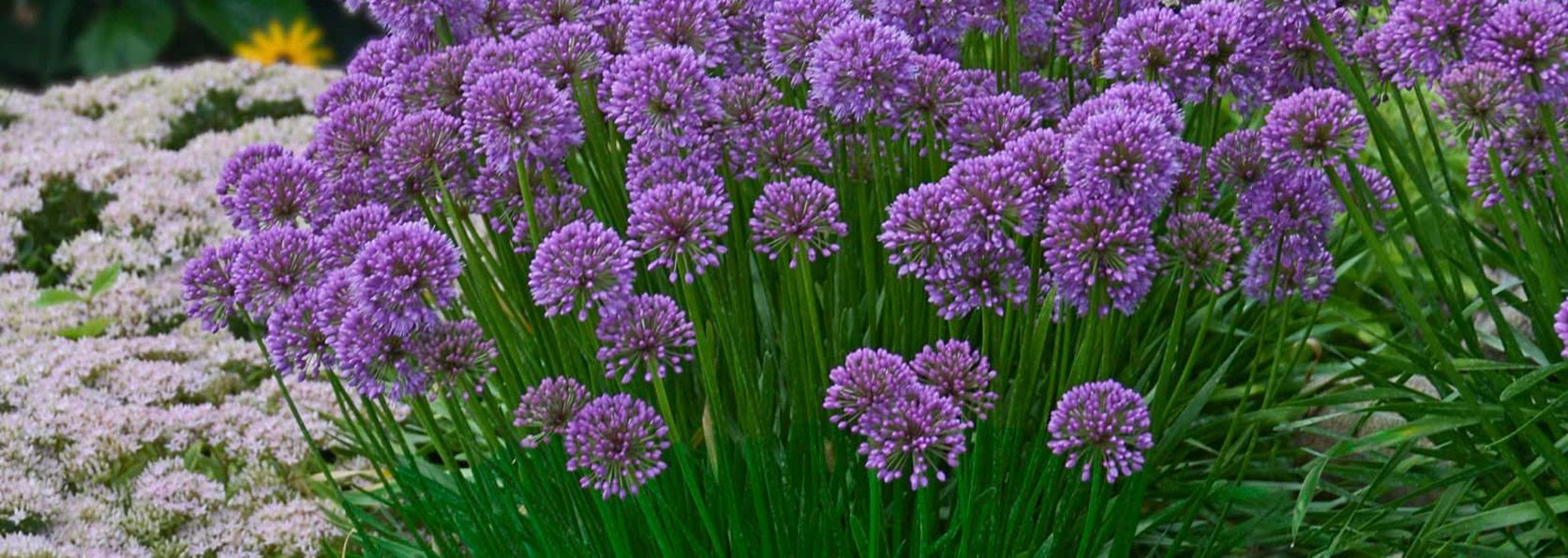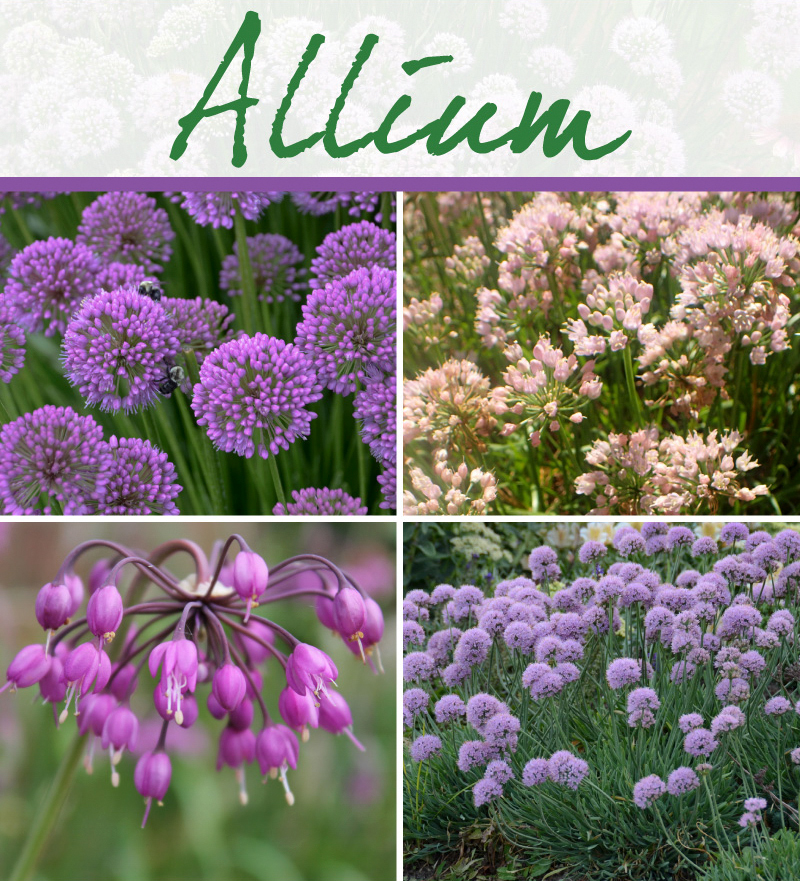I’m Always on the Move

Perennial Of The Week: Allium/Ornamental Onion
Bring movement, stature, and spherical form to your “sun garden” with Allium. Some forms of Allium swirl like a fisherman’s favorite eddy, while others nod coyly in cottage gardens, and others stand in rows like soldiers.
Members of the Amaryllis family, Ornamental Onions are low-growing mounds of grassy leaves, and produce tall, slim stems topped with compact, spherical blooms or nodding, open flowers.
First described by Linnaeus in 1753, Allium was given a Greek name meaning “to avoid” due to the plants’ onion-scented flowers and leaves. Allium secretes cysteine sulfoxides that make the plants unpopular with foraging deer, groundhogs and rabbits. We continue to recommend deer repellants for all non-fenced gardens and landscapes.
Allium grows well, even in dry conditions or poor soil, and several varieties grow and spread via seed or rhizomes.
Remember that Allium foliage tends to fade early, so plan to bring companion plants into the mix to retain your garden’s color. Catmint, Salvia, low-growing Ornamental Grasses, Dianthus, Agastache, and Artemesia are a few options that work well.
We are currently featuring the following Rohsler’s Grown varieties in the terra cotta pots bearing our Rohsler’s Grown logo: Medusa, blue eddy, summer beauty, cernuum, and millenium.
Let’s address the elephant in the garden: We know how to spell millennium, but this particular variety of Allium was registered with the spelling you see here: millenium! It’s enough to give an editor fits!
What does Allium millenium bring to your garden? Expect your plants to get 12” to 18” tall and shower you with large, rose-pink flowers. This plant produces sterile seeds, and will not spread; however, you will be able to divide your plants in spring or fall. Millenium has been named the Perennial Plant of the Year in 2018 by the Perennial Plant Association. This variety loves full sun, but appreciates some light afternoon shade during the hottest part of the summer.
Allium Medusa: Named for the snake-haired gorgon herself, this variety produces a low-growing mound of grayish-green foliage and rewards gardeners with amethyst-colored flower heads. Medusa loves sun (at least six hours a day), and reaches 20 to 24” in height.
Blue eddy draws its name from the plant’s tendency to swirl like water. This variety grows 6 to 12” tall and sometimes continues to produce its lavender-pink blooms well into early fall. Given the chance, blue eddy will self-seed and spread via rhizomes. If you choose to deadhead this plant, you’ll experience less spreading, but will enjoy stronger blooms the following year. You will also enjoy the blooms as cut flowers and/or dried flowers. If you take this route, cut the flower stems when the flower heads have begun to open, but still have some closed buds.
Summer beauty: Another lavender-pink variety, summer beauty grows 18 to 20” tall and features glossy green foliage that turns gold in the fall. This fastidious variety of Allium will not self-sow.
Cernuum: Latin for “nodding,” cernuum is a fit description for the gently cascading flower heads of this type of Allium. Cernuum grows 12 to 18” tall and produces loose clusters of pink, lilac, or white flowers. This is an excellent option for cottage gardens, and will naturalize and self-seed.

